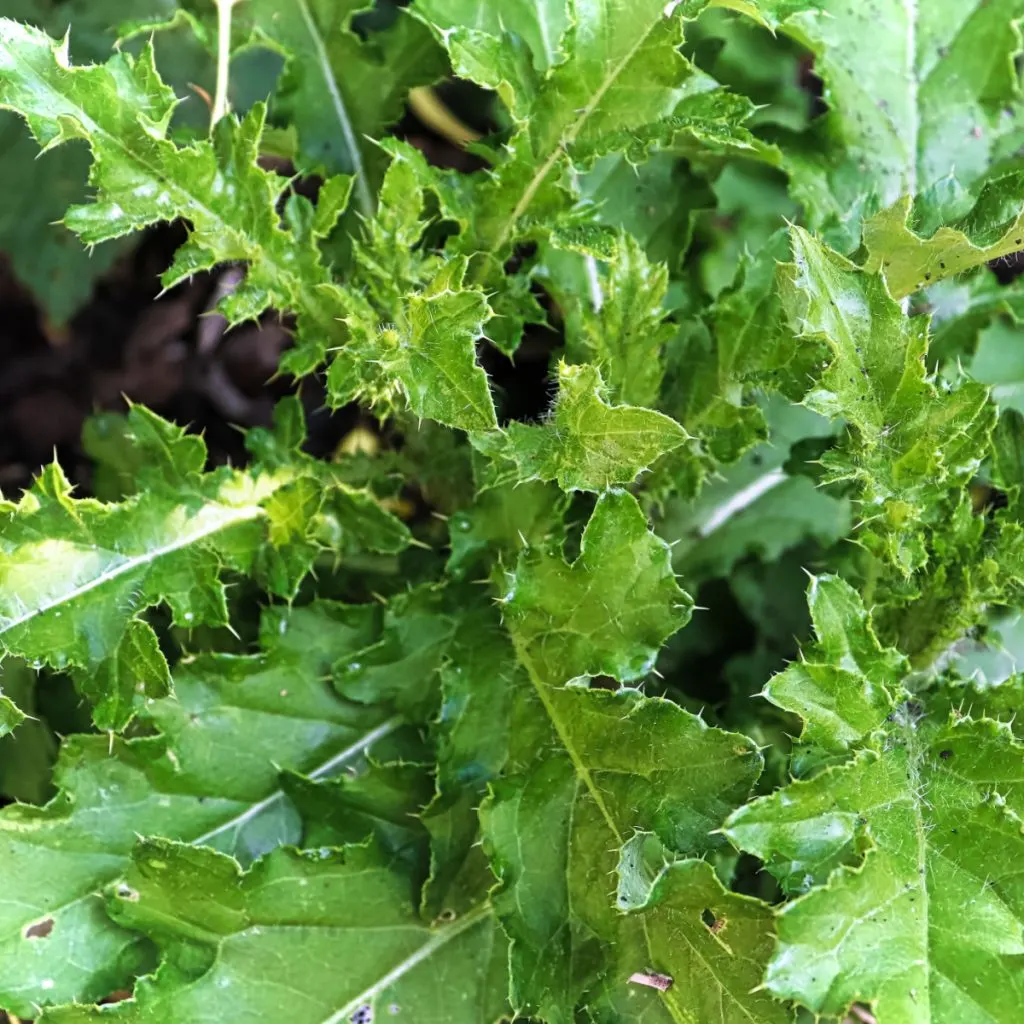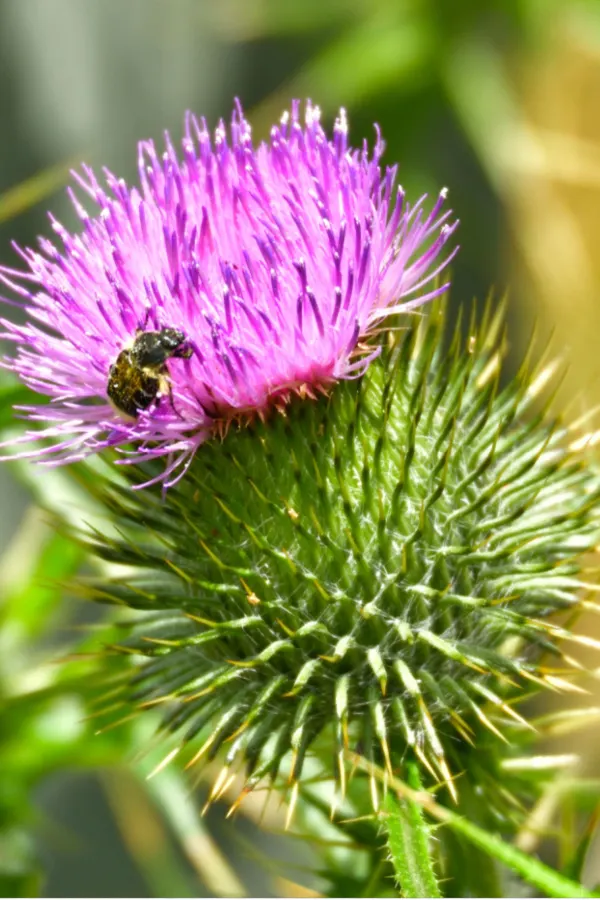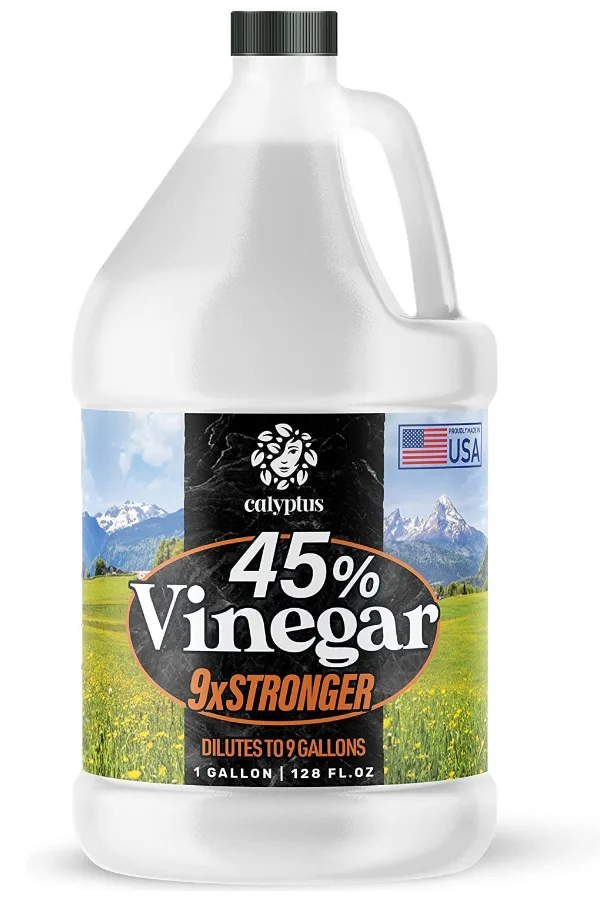Looking for a few tips and tricks to finally gain the upper hand and get rid of those pesky Canadian thistle weeds growing and regrowing in your flowerbeds?
No matter if it’s Canadian thistle, Milk thistle, Scotch thistle or the myriad of other thistle types that exist – once the pesky weeds get a foothold in the soil, it can seem nearly impossible to eliminate them. So much so that many times, it seems as though pulling them up only results in producing more of them!
One thing is for sure, thistles are a thorn in the side of gardeners all over the world. With a taproot that can dive deep in the soil and spread like wildfire, they are hard to stop. What makes them even worse is how fast they can spread via seed.

Thistle plants produce an astonishing amount of seeds. In fact, depending on the variety, a single plant can produce as many as 10,000 to 100,000 seeds or more! That might be great for the birds that enjoy snacking on them – but when it comes to spreading the weeds in your flowerbeds and vegetable garden, it can mean big trouble!
But here is the good news, you can win the battle! Even better, you get rid them naturally, without having to resort to harsh man-made chemicals. As you will see below, armed with one single secret – you can eliminate them faster than you ever imagined!
How To Get Rid Of Canadian Thistle Weeds – Naturally!
How Thistle Grows & Spreads
Gaining the upper hand on thistles all starts with knowing how they grow and spread. Thistles multiply in two separate ways – by their seed and by their roots.
By far, the most prolific way thistle spreads is by producing a seed head. Once its seeds mature, they then scatter by the wind, or get carried to new locations by birds and wildlife. And not only do thistle plants produce a lot of seed, it can stay fertile for 15 to 20 years!
But thistle plants also can reproduce quite easily via their root system. As the roots of thistle plants grow, they sprout new horizontal roots. The horizontal roots then shoot up new stems through the soil – and just like that, it becomes even harder to get rid of thistle weeds!

Unfortunately, if you dig up a thistle plant and portions of the roots remain in the ground, they too will grow back into new plants.
It’s certainly easy to see why thistles can be such an issue for gardeners – and how the battle can often seem futile. But believe it or not, there is one single (and natural) substance that can get rid of thistles fast. Especially when you apply it in just the right way!
How To Use Vinegar To Get Rid Of Canadian Thistle Weeds For Good
Vinegar, or more precisely, horticultural vinegar, is a true hero when it comes to killing Canadian thistle. And best of all, it not only kills the plants above ground, but the deep roots under the soil as well.
Horticultural vinegar is a stronger version of household vinegar. Household or common vinegar usually has an acidic makeup of 4 to 5%. But horticultural vinegar is much more potent. It can have an acidic makeup anywhere from 15% all the way to 45% or more. Product Link: Calyptus 45% Pure Super Concentrated Vinegar
This strong acidic makeup is exactly what makes it so deadly against thistle. It also happens to be why the product is a great choice when clearing driveways, patios and walkways of weeds as well. See: How To Use Horticultural Vinegar To Kill Weeds In Driveways

How To Use Horticultural Vinegar To Get Rid Of Canadian Thistle
How and when you use horticultural vinegar on your thistle weeds is important. Although you can carefully spray the foliage of the plants, it often doesn’t result in a total kill. It will usually brown off all of the foliage, but allow the roots stay strong enough to send up new growth.
But there is a little secret to killing the roots and all of thistle plants – and it involves getting the vinegar directly into the root system – and fast. And the best way to do that is to cut the plant back near the soil line and spray the open cuts.
Not only does this pinpoint the use of the vinegar, it also allows the vinegar to go directly into the thistles and be absorbed down deep into the roots. The result? A near 100% percent chance of killing off the entire thistle plant!
Although you can effectively spray thistle at any point of the growing season, there are actually two great times of the year that are best for spraying – early spring and in the fall.
In the spring, thistle is spending a lot of energy trying to develop. This means the roots are absorbing energy as fast as they can. That also means the roots will take in the spray more easily. Late fall is great because the plant is trying to absorb and conserve energy in its roots for winter.
Both spring and fall are also easy for this task as it’s easy to see the green thistle among the other foliage that is dead.

A Few Precautions When Using Horticultural Vinegar – How To Get Rid Of Canadian Thistle
There are a couple of things to know before using horticultural vinegar on thistles. The first and most important thing to know is that because of its acidic nature, you do need to use personal protection.
The acid is extremely caustic and can burn the skin and eyes. Long gloves, long sleeves and eye protection are a must when spraying it on plants. Also, always keep pets and children far away when spraying until the spray dries.
Secondly, because horticultural vinegar is acidic, it can alter the pH of your soil when used broadly. This is exactly why you do not want to spray your entire garden or flowerbeds with the solution.
Instead, it is best to put the vinegar into a small, hand held spray bottle and try to spray only the thistle. In addition, be careful not to allow the spray to touch nearby perennials, annuals or vegetable plants as it can kill them off as well. Here is to getting rid of thistle weeds in your landscape for good!
Here is to getting rid of Canadian thistle (and all thistle) for good this year!
This Is My Garden
Follow Our Facebook Page For Great Gardening Tips And Advice! This Is My Garden Facebook Page
This Is My Garden is a garden website created by gardeners, for gardeners. Jim and Mary Competti have been writing gardening, DIY and recipe articles and books and speaking for over 15 years from their 46 acre Ohio farm. They publish three articles every week, 52 weeks a year. Sign up today to follow via email, or follow along!
